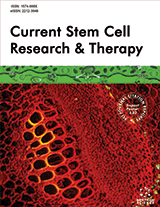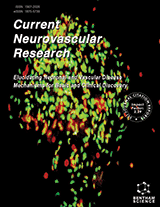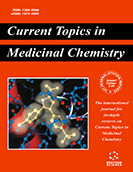Abstract
Background: The articular cartilage is unique in that it contains only a single type of cell and shows poor ability for spontaneous healing. Currently, approaches for treating cartilage defects include surgical and nonsurgical approaches, as well as cartilage tissue engineering. For standard cartilage tissue engineering, three elements are required, i.e., a scaffold, growth factors, and seed cells. With advancements in stem cell research, the main sources of cells for cartilage tissue engineering are embryonic and mesenchymal stem cells, which have been shown to be promising alternatives in recent years.
Objective: In this review, we focus on the applications of various stem cells in cartilage tissue engineering.
Results: Under certain conditions, several types of stem cells, including embryonic stem cells, mesenchymal stem cells, induced pluripotent stem cells, and cartilage progenitor cells, showed potential for applications in chondrogenic differentiation.
Conclusion: Stem cells can be developed as important cell sources for cartilage tissue engineering if appropriate microenvironments and bioactive factors are supplied. However, further studies are needed to determine the ideal cell type for cartilage repair, particularly using in vivo and clinical studies.
Keywords: Articular cartilage, tissue engineering, chondrogenic differentiation, stem cells, mesenchymal stem cells, embryonic stem cells.
Current Stem Cell Research & Therapy
Title:Different Sources of Stem Cells and their Application in Cartilage Tissue Engineering
Volume: 13 Issue: 7
Author(s): Quanquan Ma, Jinfeng Liao and Xiaoxiao Cai*
Affiliation:
- State Key Laboratory of Oral Diseases, West China Hospital of Stomatology, Sichuan University, Chengdu, Sichuan Province,China
Keywords: Articular cartilage, tissue engineering, chondrogenic differentiation, stem cells, mesenchymal stem cells, embryonic stem cells.
Abstract: Background: The articular cartilage is unique in that it contains only a single type of cell and shows poor ability for spontaneous healing. Currently, approaches for treating cartilage defects include surgical and nonsurgical approaches, as well as cartilage tissue engineering. For standard cartilage tissue engineering, three elements are required, i.e., a scaffold, growth factors, and seed cells. With advancements in stem cell research, the main sources of cells for cartilage tissue engineering are embryonic and mesenchymal stem cells, which have been shown to be promising alternatives in recent years.
Objective: In this review, we focus on the applications of various stem cells in cartilage tissue engineering.
Results: Under certain conditions, several types of stem cells, including embryonic stem cells, mesenchymal stem cells, induced pluripotent stem cells, and cartilage progenitor cells, showed potential for applications in chondrogenic differentiation.
Conclusion: Stem cells can be developed as important cell sources for cartilage tissue engineering if appropriate microenvironments and bioactive factors are supplied. However, further studies are needed to determine the ideal cell type for cartilage repair, particularly using in vivo and clinical studies.
Export Options
About this article
Cite this article as:
Ma Quanquan , Liao Jinfeng and Cai Xiaoxiao *, Different Sources of Stem Cells and their Application in Cartilage Tissue Engineering, Current Stem Cell Research & Therapy 2018; 13 (7) . https://dx.doi.org/10.2174/1574888X13666180122151909
| DOI https://dx.doi.org/10.2174/1574888X13666180122151909 |
Print ISSN 1574-888X |
| Publisher Name Bentham Science Publisher |
Online ISSN 2212-3946 |
 100
100 19
19
- Author Guidelines
- Bentham Author Support Services (BASS)
- Graphical Abstracts
- Fabricating and Stating False Information
- Research Misconduct
- Post Publication Discussions and Corrections
- Publishing Ethics and Rectitude
- Increase Visibility of Your Article
- Archiving Policies
- Peer Review Workflow
- Order Your Article Before Print
- Promote Your Article
- Manuscript Transfer Facility
- Editorial Policies
- Allegations from Whistleblowers
- Announcements


























